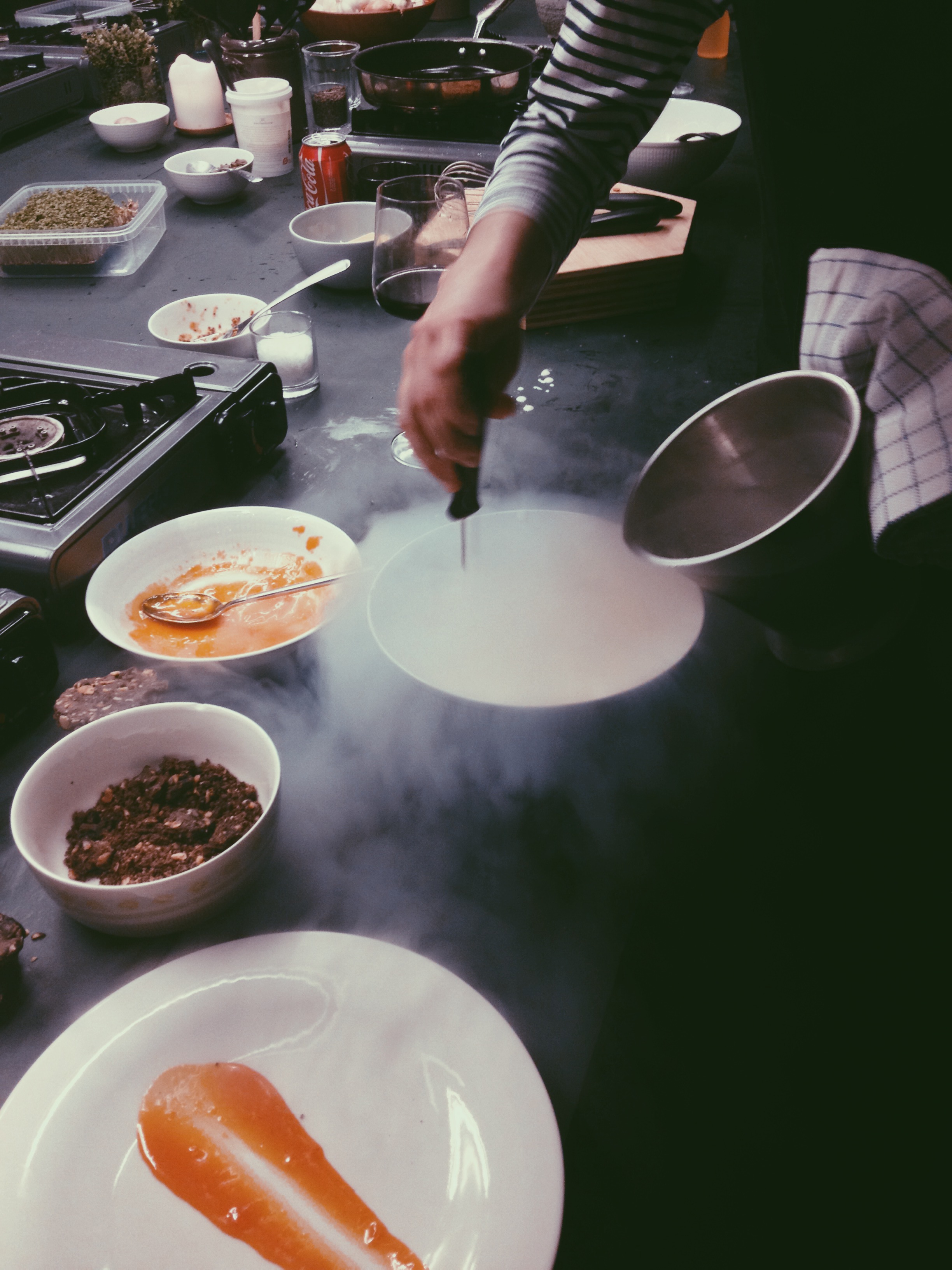in sickness and in health, a parody
being sick / america
Squirrel through the office fruit basket looking for some oranges. Buy orange juice from concentrate. Empty three packets of Emergen-C into your orange juice from concentrate. Pop, fizz, slurp. Stock up on instant soup. Pray whatever's coming won't last for a long time. Begin to get stressed about the thought of becoming sick and having to deal with it at work. Pop some pain-killers. When the inevitable hits, and you wake up with a cold, purchase tissues during your lunch break at work. Have trouble deciding if you want pocket packs or one big box. Purchase both. Feel your throat begin to go. 'Oh, you're getting sick', say your colleagues. 'Yeah...' you mumble. Sucks. It's been a month since last time. Some Sudafed will help with the drip but it will dry you right up, so drink some water. Listen to the man next to you cough and cough and cough. This doesn't gross you out enough. 5 minutes later, ask to borrow his tissues because they're much softer than yours. Stock up on Purell. Squirt, wipe, flap. Go home on the bus and try not to think about the fact that your nose is running and you ran out of tissues. Clutch the tattered toilet paper in your jacket pocket. Zinc! You need zinc. Zi-cam. Wasn't that stuff, like, removed in nasal spray form because it took away people's sense of smell? Not like it matters, because you currently don't have a sense of small anyway. Spray, whiff, snort. Try and calculate if you sleep in for two hours tomorrow, is the office equivalent of a two hour delay, and will it really count as using a full half of a sick day? Think about how much you have to finish with That Project at work and goddamnit, Becky's been out of the office for like three days and that bitch only had a fever. Has she ever heard of Dayquil? She should be better and back by now. She's probably faking it, you think, as you empty the little plastic cup of Nyquil down your throat, the rancid cherry flavor twisting your face into the picture of misery, and yet years of downing D-level vodka in college has prepared you for these very moments. Crash, bed, fade. Wake up the next morning and your nose is clogged as hell but it isn't dripping anymore. Thanks Sudafed. Or was it the Nyquil? Downside/upside: throat is ragged, voice is gone. This is good because you will milk all of the sympathy at work. Make sure to emphasize it in front of your boss. 'Oh, your voice is gone!' says a co-worker. 'You sound really sick.' 'Yeahh,' you croak, popping disgusting-flavored Halls your roommate had in her sock drawer, (pop, suck, cringe) 'But it's fine. I've got to make sure I finish The Project.' Hunch over your desk and start typing away for added sympathy slash badassness. You really should see the doctor, $20 co-pay to make sure you haven't since developed cancer. Just make sure you take Mucinex because otherwise it'll all spread to your lungs and that's just bronchitis waiting to happen. Miraculously, Friday you wake up, and everything is good. Everything is good! Happy hour after work? Yes please. You need a damn drink. Pour, slurp, gone. After this week, you need to relax. Jesus, being sick is exhausting.
being sick / currently
At the first onset of sickness, pray whatever's coming won't last for a long time, for your own sanity. There is no medicine here for you to take. You can take a few hours off in the morning tomorrow to re-charge with an extra long night's sleep, and probably nip the whole damn thing in the bud right now. But you are American. You go into work. When the inevitable hits, and you wake up with a full-blown cold two days later, you go into work. Your boss will hear your voice on the phone and ask you if you have a cold. Your boss will tell you to either A) take it easy or B) go home. You do not play up your symptoms, because there is a very real chance your office mates will get super grossed out and immediately demand you leave before you get anyone else sick. What are you thinking?! If you do reveal to your co-workers you are feeling under the weather, prepare for a myriad of homeopathic suggestions ranging from alcohol to a delicious combination of raw ginger, lemon, & honey steeped in hot water. If it's realllllllly bad, you can pick up some Panodil at the pharmacy, but, you know, that's medicine. Don't even think about seeing a doctor for this. You don't need a doctor. You'll let your illness run its course. You'll drink a lot of tea and eat a lot of soup. You will feel okay if it takes a turn for the worse and you have to be out of the office for two days. You will secretly give yourself a double-dose of the Nyquil you have snuck back from the U.S. and pass out for a blissful 10 hour sleep, the likes of which ginger tea cannot provide. It is the best thing you have brought back from the U.S. besides the Trader Joe's almond butter. Your Danish roommate will look on with a combination of envy, intrigue, and suspicion. You'll be better by the time the office Friday bar rolls around. Being sick happens.

































